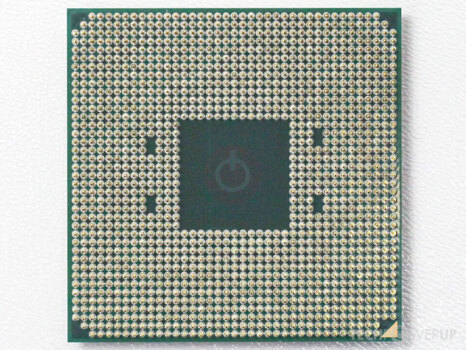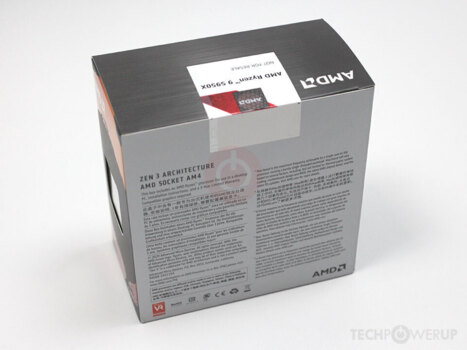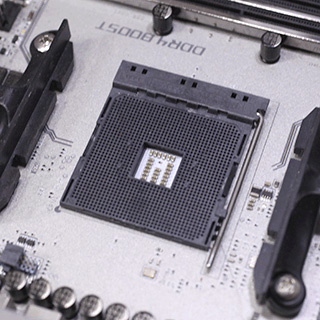16
Cores
32
Threads
105 W
TDP
3.4 GHz
Frequency
4.9 GHz
Boost
Vermeer
Codename
Socket AM4
Socket
The AMD Ryzen 9 5950X is a desktop processor with 16 cores, launched in November 2020, at an MSRP of $799. It is part of the Ryzen 9 lineup, using the Zen 3 (Vermeer) architecture with Socket AM4. Thanks to AMD Simultaneous Multithreading (SMT) the core-count is effectively doubled, to 32 threads. Ryzen 9 5950X has 64 MB of L3 cache and operates at 3.4 GHz by default, but can boost up to 4.9 GHz, depending on the workload. AMD is making the Ryzen 9 5950X on a 7 nm production node using 8,300 million transistors. The silicon die of the chip is not fabricated at AMD, but at the foundry of TSMC. You may freely adjust the unlocked multiplier on Ryzen 9 5950X, which simplifies overclocking greatly, as you can easily dial in any overclocking frequency.
With a TDP of 105 W, the Ryzen 9 5950X consumes a good deal of power, so decent cooling is needed. AMD's processor supports DDR4 memory with a dual-channel interface. The highest officially supported memory speed is 3200 MT/s, but with overclocking (and the right memory modules) you can go even higher. ECC memory is supported, too, which is an important capability for mission-critical systems, to avoid data corruption. For communication with other components in the computer, Ryzen 9 5950X uses a PCI-Express Gen 4 connection. This processor does not have integrated graphics, you will need a separate graphics card.
Hardware virtualization is available on the Ryzen 9 5950X, which greatly improves virtual machine performance. Programs using Advanced Vector Extensions (AVX) can run on this processor, boosting performance for calculation-heavy applications. Besides AVX, AMD is including the newer AVX2 standard, too, but not AVX-512.
With a TDP of 105 W, the Ryzen 9 5950X consumes a good deal of power, so decent cooling is needed. AMD's processor supports DDR4 memory with a dual-channel interface. The highest officially supported memory speed is 3200 MT/s, but with overclocking (and the right memory modules) you can go even higher. ECC memory is supported, too, which is an important capability for mission-critical systems, to avoid data corruption. For communication with other components in the computer, Ryzen 9 5950X uses a PCI-Express Gen 4 connection. This processor does not have integrated graphics, you will need a separate graphics card.
Hardware virtualization is available on the Ryzen 9 5950X, which greatly improves virtual machine performance. Programs using Advanced Vector Extensions (AVX) can run on this processor, boosting performance for calculation-heavy applications. Besides AVX, AMD is including the newer AVX2 standard, too, but not AVX-512.
Physical
| Socket: | AMD Socket AM4 |
|---|---|
| Foundry: | TSMC |
| Process Size: | 7 nm |
| Transistors: | 8,300 million |
| Die Size: | 2x 74 mm² |
| I/O Process Size: | 12 nm |
| I/O Die Size: | 125 mm² |
| Package: | µOPGA-1331 |
| tCaseMax: | 95°C |
Processor
| Market: | Desktop |
|---|---|
| Production Status: | Active |
| Release Date: | Nov 5th, 2020 |
| Launch Price: | $799 |
| Part#: | 100-000000059 |
| Bundled Cooler: | None |
Performance
| Frequency: | 3.4 GHz |
|---|---|
| Turbo Clock: | up to 4.9 GHz |
| XFR: | 5.05 GHz |
| Base Clock: | 100 MHz |
| Multiplier: | 34.0x |
| Multiplier Unlocked: | Yes |
| TDP: | 105 W |
| PPT: | 142 W |
Architecture
| Codename: | Vermeer |
|---|---|
| Generation: |
Ryzen 9
(Zen 3 (Vermeer)) |
| Memory Support: | DDR4 |
| Rated Speed: | 3200 MT/s |
| Memory Bus: | Dual-channel |
| ECC Memory: | Yes |
| PCI-Express: |
Gen 4, 20 Lanes (CPU only) |
| Chipsets: | AMD 300 Series*, AMD 400 Series, AMD 500 Series |
Core Config
| # of Cores: | 16 |
|---|---|
| # of Threads: | 32 |
| SMP # CPUs: | 1 |
| Integrated Graphics: | N/A |
Cache
| Cache L1: | 64 KB (per core) |
|---|---|
| Cache L2: | 512 KB (per core) |
| Cache L3: | 64 MB |
Features
|
Notes
| AMD 300 Series chipset support is contingent on vendor updates to AGESA 1.2.0.6b/c. ECC modes require motherboard support. |
Apr 25th, 2024 12:10 EDT
change timezone
Latest GPU Drivers
New Forum Posts
- Have you got pie today? (16317)
- Milestones (13874)
- WCG Daily Numbers (12496)
- TPU's Rosetta Milestones and Daily Pie Thread (1859)
- ThrottleStop 9.6 Voltage won't change (4)
- Folding Pie and Milestones!! (9008)
- Making Audio Enhancers Work on Windows (2649)
- Random blue screen from winload.efi error (0xc000000e) (1)
- which new soundcard or which 4.1 speakers kits ? (10)
- Alphacool CORE 1 CPU block - bulging with danger of splitting? (8)
Popular Reviews
- Fractal Design Terra Review
- Thermalright Phantom Spirit 120 EVO Review
- Corsair 2000D Airflow Review
- Minisforum EliteMini UM780 XTX (AMD Ryzen 7 7840HS) Review
- ASUS GeForce RTX 4090 STRIX OC Review
- NVIDIA GeForce RTX 4090 Founders Edition Review - Impressive Performance
- ASUS GeForce RTX 4090 Matrix Platinum Review - The RTX 4090 Ti
- MSI GeForce RTX 4090 Suprim X Review
- MSI GeForce RTX 4090 Gaming X Trio Review
- Gigabyte GeForce RTX 4090 Gaming OC Review
Controversial News Posts
- Sony PlayStation 5 Pro Specifications Confirmed, Console Arrives Before Holidays (116)
- NVIDIA Points Intel Raptor Lake CPU Users to Get Help from Intel Amid System Instability Issues (106)
- AMD "Strix Halo" Zen 5 Mobile Processor Pictured: Chiplet-based, Uses 256-bit LPDDR5X (101)
- US Government Wants Nuclear Plants to Offload AI Data Center Expansion (98)
- Windows 11 Now Officially Adware as Microsoft Embeds Ads in the Start Menu (94)
- AMD's RDNA 4 GPUs Could Stick with 18 Gbps GDDR6 Memory (85)
- Developers of Outpost Infinity Siege Recommend Underclocking i9-13900K and i9-14900K for Stability on Machines with RTX 4090 (85)
- Windows 10 Security Updates to Cost $61 After 2025, $427 by 2028 (84)







